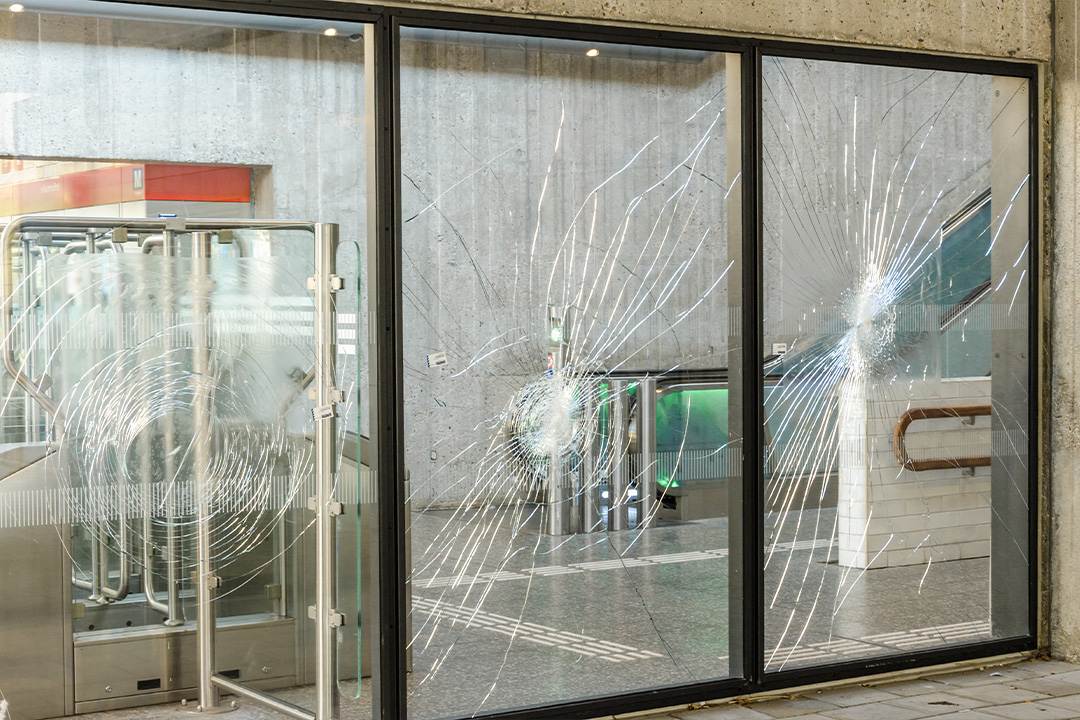When it comes to home security, one aspect that often gets overlooked is the strength and durability of our windows. We may invest in state-of-the-art locks and alarms, but if our windows are easily breached, then it’s all for naught. So, what type of windows are the most resistant to break-ins? In this article, we delve into the world of window security and explore the various types of windows that are notoriously difficult to crack open, providing you with valuable insights to better protect your home and loved ones.
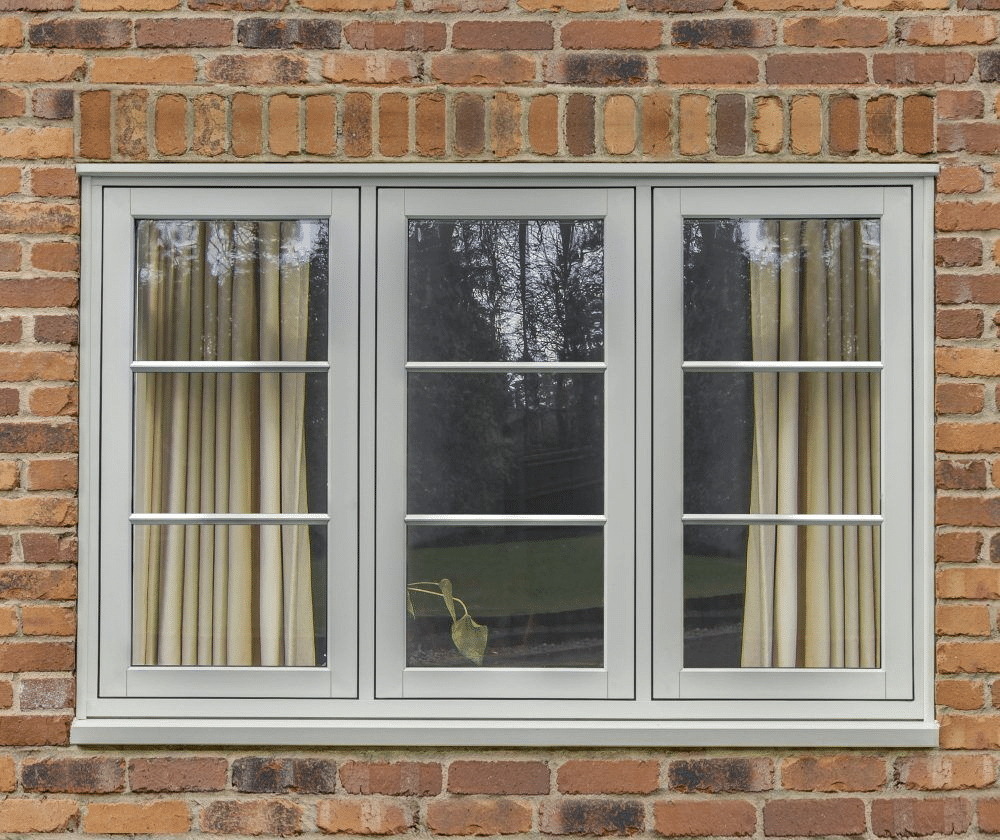
This image is property of www.getunderskeleton.com.
Impact-resistant Windows
When it comes to ensuring the security and safety of our homes or buildings, one of the key areas to focus on is windows. Windows serve as vulnerable points of entry and are often targeted by intruders. Therefore, investing in impact-resistant windows can provide an added layer of protection and peace of mind.
Laminated Glass
One of the main components of impact-resistant windows is laminated glass. Unlike regular glass, laminated glass is designed to withstand various forces and resist breakage. It consists of two or more layers of glass that are bonded together using a polyvinyl butyral (PVB) interlayer. This interlayer plays a vital role in enhancing the window’s strength and durability.
Polyvinyl Butyral (PVB) Layer
The PVB interlayer is the secret behind the impressive impact resistance of laminated glass. It is a strong, clear plastic that holds the layers of glass together even when shattered. When the glass is subjected to an external force, it may crack, but the broken pieces remain adhered to the interlayer, preventing the glass from totally breaking apart. This feature significantly improves the window’s ability to withstand impact and intrusions.
Multiple Layers of Glass
Another characteristic that makes impact-resistant windows hard to break into is the presence of multiple layers of glass. Instead of just a single pane of glass, these windows are typically composed of two or more layers. This construction adds an extra level of strength and resistance, making it more challenging for potential intruders to gain access to the building.
Reinforced Frames
In addition to the glass itself, impact-resistant windows often feature reinforced frames. These frames are specifically designed to withstand significant forces and prevent the window from being easily dislodged or compromised. Reinforced frames can be made from various materials such as aluminum, vinyl, or fiberglass, each providing its own strength and security benefits.
Tempered Glass Windows
Tempered glass windows are another excellent choice when it comes to enhancing window security. These windows undergo a specialized heat treatment process that significantly increases their strength and durability, making them highly resistant to breakage.
Heat Treatment
The heat treatment process used to create tempered glass involves subjecting the glass to extreme temperatures and then rapidly cooling it. This rapid cooling creates internal tension within the glass, resulting in its increased strength. Tempered glass is typically five times stronger than regular glass and can withstand greater impacts and forces.
Strength and Durability
Due to its heat treatment, tempered glass is highly resistant to breakage. In the event that it does break, it shatters into small, rounded pieces instead of sharp shards, minimizing the risk of injury. This feature is particularly beneficial in situations where physical safety is a concern, such as homes with children or high-traffic areas.
Break Pattern
When tempered glass breaks, it exhibits a unique break pattern known as “dicing.” Instead of large, dangerous shards, the glass breaks into small, harmless pieces resembling granulated sugar. This break pattern not only reduces the risk of injuries but also makes it more difficult for intruders to gain access to the building, as the shattered glass is less likely to create significant openings.
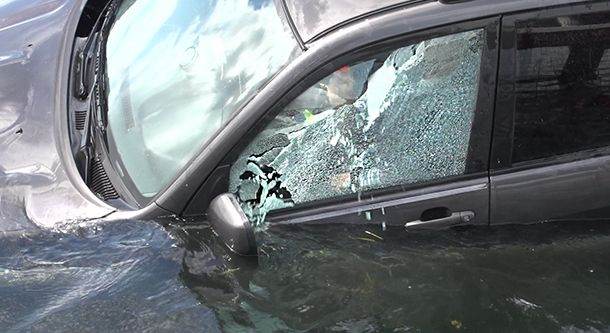
This image is property of hips.hearstapps.com.
Double- or Triple-Pane Windows
double- or triple-pane windows offer enhanced security by providing additional layers of glass and insulating air layers.
Increased Thickness
The primary advantage of double- or triple-pane windows is their increased thickness compared to single-pane windows. The extra layers of glass make it harder for intruders to break through, acting as a deterrent to potential break-ins.
Insulated Air Layers
In addition to the multiple layers of glass, double- or triple-pane windows also feature insulated air layers between each pane. These air layers help to improve the window’s energy efficiency by minimizing the transfer of heat or cold. However, they also contribute to the overall strength and security of the window by adding an extra barrier for intruders to overcome.
Laminated Interlayer
Similar to impact-resistant windows, double- or triple-pane windows can also incorporate a laminated interlayer. This interlayer provides an additional level of protection and ensures that even if one pane of glass is shattered, the entire window structure remains intact, making it more difficult for intruders to gain access.
Security Film on Windows
Security film is a cost-effective and practical solution to reinforce the strength and security of existing windows. It adds an extra layer of protection by making the glass more resistant to breakage.
Thickness and Strength
Security films are typically composed of multiple layers of polyester or other high-strength materials. These films can range in thickness, with thicker variants providing enhanced protection. The multiple layers work together to absorb and disperse impact forces, making it harder for potential intruders to break through the glass.
Adhesive Bonding
When applying security film, it is crucial to ensure proper adhesive bonding. The film must be firmly and evenly adhered to the glass surface to maximize its effectiveness. Adhesive bonding not only strengthens the film’s resistance to breakage but also helps to hold the shattered glass pieces together, further improving the window’s security.
Shatter Resistance
One of the key benefits of security film is its shatter resistance. In the event that the glass does break, the film holds the shattered pieces together, preventing them from scattering and reducing the risk of injury. This shatter resistance acts as a deterrent to intruders, as the broken glass becomes a substantial obstacle to gain entry.

This image is property of www.windowfilmdepot.com.
Smart Windows
Smart windows combine the benefits of modern technology and enhanced security features, making them an increasingly popular choice for homeowners and businesses alike.
Electrochromic Technology
Smart windows utilize electrochromic technology, which allows the glass to change its transparency level on demand. This technology enables the windows to switch between transparent, partially opaque, and fully opaque states. By controlling the level of transparency, individuals can secure their privacy while still allowing natural light to enter.
Privacy Mode
The ability to switch to an opaque state provides an additional layer of security. By activating the privacy mode, smart windows prevent prying eyes from seeing into the building, enhancing both privacy and security. This feature is particularly valuable in residential or commercial settings where confidentiality is crucial.
Strength and Security Features
In addition to their dynamic transparency capabilities, smart windows also possess the inherent strength and security features of impact-resistant or tempered glass. The combination of these features creates a formidable barrier against break-ins. Intruders face not only the challenge of breaking through the glass but also the advanced technology that controls its transparency, making smart windows an excellent choice for security-conscious individuals.
Wire Glass Windows
Wire glass windows provide an additional level of security through the incorporation of a steel wire mesh within the glass.
Steel Wire Mesh
The steel wire mesh is embedded within the glass during the manufacturing process. This mesh reinforces the glass, making it much more resistant to breakage. Even if the glass does shatter, the wire mesh holds the broken pieces together, creating a formidable barrier that is difficult to penetrate.
Code Compliance
Wire glass windows are often required in certain building code applications, such as fire-rated assemblies and safety glazing in hazardous areas. These requirements further emphasize the strength and security benefits of wire glass. While primarily used in commercial settings, wire glass can also be a valuable addition to residential properties seeking enhanced protection.
Break Resistance
The combination of tempered glass and the steel wire mesh makes wire glass highly resistant to breakage. Even with a significant impact, the wire mesh prevents the glass from shattering and falling apart, effectively deterring potential intruders. This break resistance, coupled with the required code compliance, makes wire glass windows a robust choice for those prioritizing security.
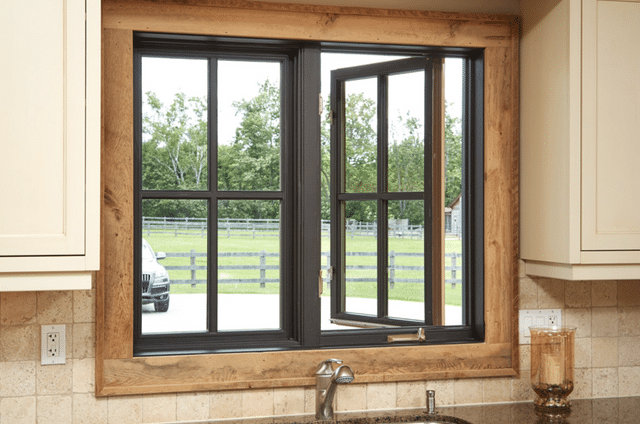
This image is property of www.getunderskeleton.com.
Window Security Bars
Window security bars are a tried and tested method to enhance security by physically deterring intruders from entering through windows.
Metal Bars
Window security bars are typically made of durable metals such as steel or wrought iron. These materials offer significant strength and make it extremely challenging for intruders to tamper with or force their way past the bars. The solid construction of metal bars reinforces the window’s security and acts as a visual deterrent to potential break-ins.
Installation Method
Window security bars can be installed either on the interior or exterior of windows. Exterior installations typically involve bars that are securely mounted to the window frame or masonry. Interior installations may use brackets or hinges to allow for easy opening and closing of the bars for emergency purposes. Proper installation is essential to ensure the bars provide the desired level of security.
Visible Deterrence
One of the primary advantages of window security bars is their visible deterrence factor. The presence of securely mounted bars sends a clear message to potential intruders that the property is highly secure and not an easy target. This visual deterrent can often be enough to dissuade would-be burglars, making window security bars an effective security measure.
Polycarbonate Windows
Polycarbonate windows are a popular alternative to traditional glass windows due to their high impact resistance, lightweight nature, and weather resistance.
High Impact Resistance
Polycarbonate windows are incredibly robust and difficult to break. The material can withstand significant forces and resist shattering, making it highly effective against attempted break-ins. This impact resistance is particularly advantageous in areas prone to extreme weather conditions or higher security risks.
Lightweight Material
Despite their impressive strength, polycarbonate windows are surprisingly lightweight. This characteristic not only makes them easier to handle during installation but also reduces the strain on the window frames and hinges. The lightweight nature of polycarbonate windows can contribute to their overall durability and lifespan.
Weather Resistance
Polycarbonate windows offer excellent weather resistance, making them suitable for various climates. They are highly resistant to cracking, fading, and deterioration caused by exposure to UV radiation, extreme temperatures, or high humidity. This resilience ensures that the windows remain in optimal condition for extended periods, providing consistent security and performance.
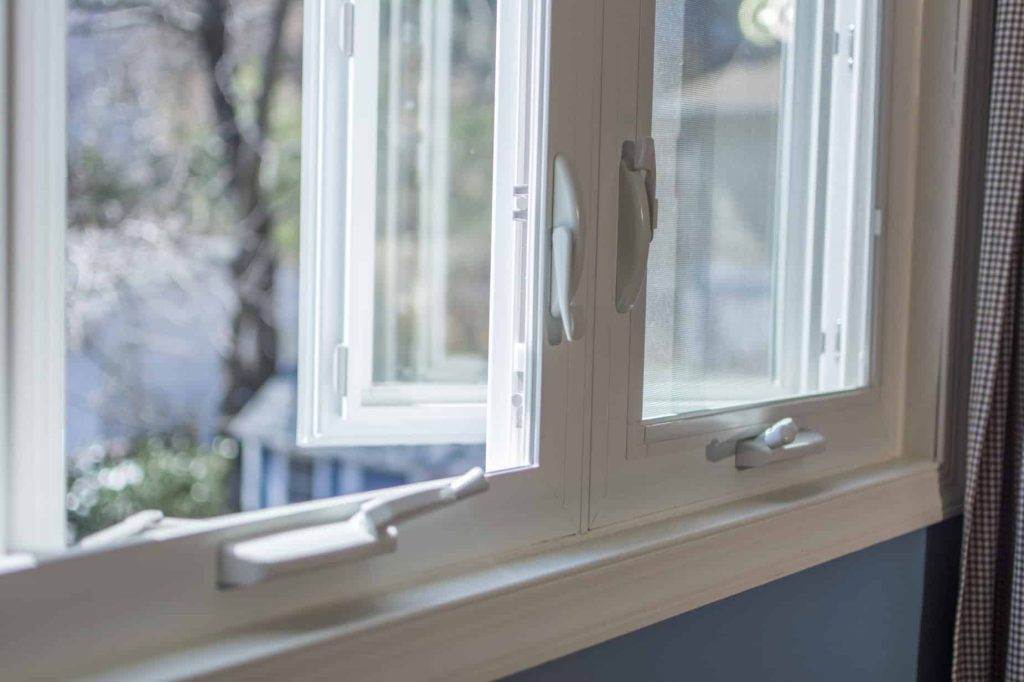
This image is property of www.thompsoncreek.com.
Steel Windows
As their name suggests, steel windows are primarily constructed from steel, offering exceptional strength, durability, and anti-burglary security features.
Robust Material
Steel is known for its incredible strength, and this characteristic is fully embraced in the construction of steel windows. The use of steel frames and sashes ensures that these windows offer formidable resistance against break-ins and forced entry attempts. Steel windows can withstand substantial impacts without compromising their structural integrity, making them an excellent choice for security-conscious individuals.
Solid Construction
In addition to the robust material, steel windows boast solid construction, further enhancing their security features. The steel frames are typically welded together, creating a solid and impenetrable barrier. This solid construction makes it extremely challenging for intruders to manipulate or defeat the window system, offering peace of mind to homeowners or commercial property owners.
Anti-Burglary Security Features
Steel windows often come equipped with various anti-burglary security features. These features can include multi-point locking systems, strengthened glass, and reinforced hinges. Additionally, steel windows can be combined with other security measures such as window film or bars for added protection. The combination of these security features makes steel windows a top choice for those seeking maximum security for their properties.
Bulletproof Windows
When the highest level of security is required, the ultimate choice is bulletproof windows. These windows are designed to withstand ballistic impacts and provide a level of protection unrivaled by other window types.
Bullet-Resistant Glass
The core aspect of bulletproof windows is the use of bullet-resistant glass. This specialized glass is constructed by bonding multiple layers of glass with interlayer materials such as polycarbonate or polyurethane. The result is a laminated glass system that can absorb and disperse the energy of a bullet, significantly reducing the risk of penetration.
Interlayer Materials
Bullet-resistant glass systems incorporate various interlayer materials to enhance their protective capabilities. These materials, such as polycarbonate or polyurethane, provide additional strength and resilience to the glass. By sandwiching these interlayers between the layers of glass, the bullet-resistant glass can effectively absorb and distribute the force of a bullet, minimizing the potential for a breach.
Level of Protection
Bulletproof windows are classified according to their level of bullet resistance, typically using standardized ratings such as the UL 752 rating system. The different levels correspond to the type and caliber of bullets the window can withstand. Higher-level ratings offer greater protection against more powerful ammunition. The specific level chosen depends on the security needs and potential threats faced by the property.
In conclusion, there are various types of windows that are hardest to break into, each offering its own unique features and benefits. Impact-resistant windows, such as those featuring laminated glass, multiple layers, and reinforced frames, provide exceptional resistance to impact and intrusions. Tempered glass windows with their heat-treated glass and unique break patterns are also highly resistant to breakage. Double- or triple-pane windows offer enhanced strength through increased thickness, insulated air layers, and laminated interlayers.
Security film can reinforce existing windows by adding thickness, adhesive bonding, and shatter resistance. Smart windows combine advanced technology, such as electrochromic capabilities and privacy modes, with inherent strength and security features. Wire glass windows incorporate steel wire mesh to achieve significant break resistance. Window security bars provide a visible deterrent, making it challenging for intruders to tamper with or force entry into windows.
Polycarbonate windows offer high impact resistance, lightweight properties, and weather resistance, making them suitable for various climates. Steel windows, known for their robust material and solid construction, feature anti-burglary security features for enhanced protection. At the highest level, bulletproof windows utilize bullet-resistant glass and interlayer materials to provide unparalleled protection against ballistic impacts.
Choosing the right type of window for your property depends on factors such as the desired level of security, location, and budget. By considering the different options available, you can make an informed decision that provides the highest level of protection and peace of mind for your home or building.
